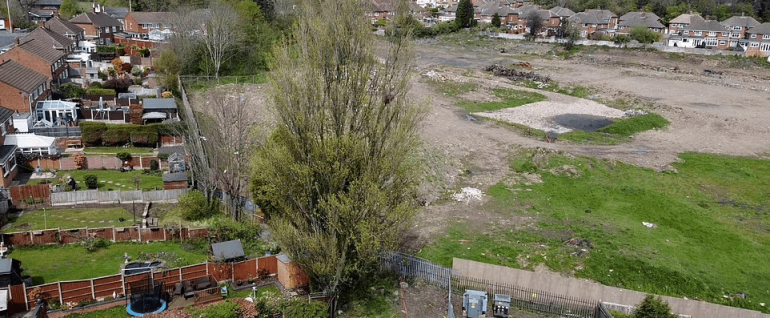Near Dudley, 72 homes are being built on a former landfill once full of hundreds of tonnes of toxic waste. A £100m regeneration plan in Gloucestershire has stalled amid accusations it’ll be built on a weapons dump. A 263-home estate in Crewe, Cheshire, could be ripped down amid claims it was built on contaminated land
Entire neighbourhoods that will one day be home to hundreds of families are being built on ‘toxic wastelands’ branded England’s ‘most contaminated’, MailOnline can today reveal.
Councils under pressure to construct more homes are now converting disused landfills, allegedly riddled with potentially lethal toxins like asbestos, arsenic and cyanide.
In the Forest of Dean a major £100million regeneration programme has stalled amid accusations that evidence ‘40,000 tonnes of American toxic weapons’ buried after the Second World War at the site had been ignored.
While hundreds of families on an estate in Crewe, Cheshire, are facing the nightmare scenario of having their homes ripped down after it was revealed they were built on land that could contain industrial waste, in breach of planning rules.
Council chiefs have insisted developments are safe and that every effort is made to ensure any hazardous material is removed before families move in.
But residents living next to one of Britain’s newest ‘toxic waste neighbourhoods’ – where 72 homes are being built on a former landfill – have hit back, telling MailOnline they are ‘frightened to death’ by what’s happening.
For 36 years the residents of Cedar Avenue in Coseley near Dudley have been campaigning against housing being built on the wasteland behind their smart semi-detached homes.
And they have good reason. The land has a rich and toxic history. In the 19th century it was an open cast coal mine, then it turned into a pond 150ft deep where locals would fish and then, in the 1970s, it was drained and it converted into a landfill.
Margaret Holden, 78, who has lived in her home since 1967, recalled: ‘For six years our lives were hell. Lorries would arrive from 7am. The dust and smells were so bad we could not open our doors and the children went to school holding their noses.
‘We had a plague of very big flies, we had rats, and one day it rained and our gardens were covered with a moving carpet of tiny frogs.’
The stuff being dumped varied from fruit machines to vegetable waste, medical waste and up to 220 tonnes of toxic metal compounds every day. This included industrial waste products such as mercury, arsenic, cyanide and asbestos – all of which are toxic.

